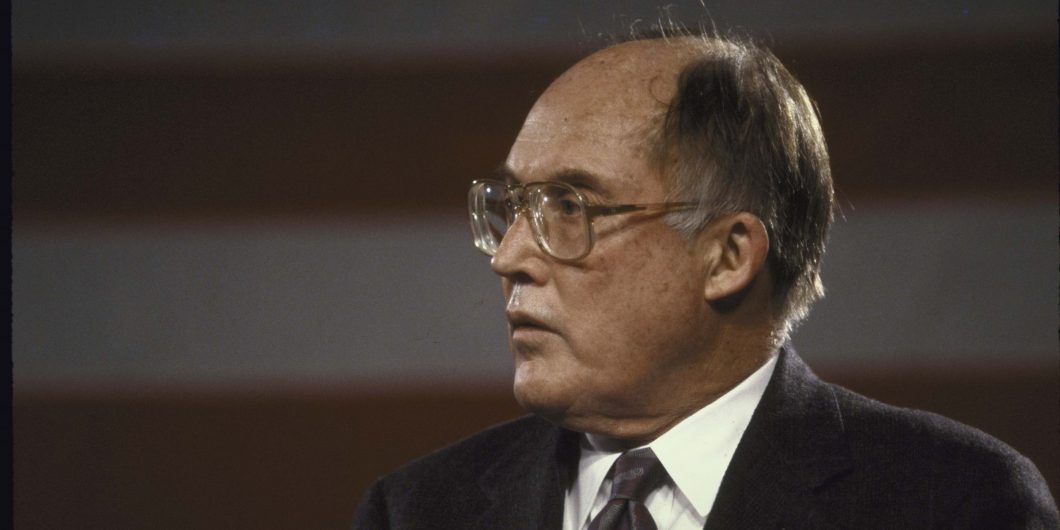The Supreme Court can be divided into three camps, two of which have claims to be originalist.
Rehnquist's Revenge
The Dobbs decision overturning Roe v. Wade is widely seen as a major victory for the conservative legal movement. Many commentators on the left and right, however, have missed the architect behind the ruling: the late Chief Justice William Rehnquist.
Since his death in 2005, Rehnquist has faded into history. He played only a supporting role in the debate that has characterized the contemporary Supreme Court. When Rehnquist became a justice in 1972, the dominant view among his colleagues and much of the legal establishment was that the constitution was a living document that they could modify in light of new circumstances. Contrary to the amendment process, which was slow and fraught with political pitfalls, judges could simply fix constitutional defects anytime the right case appeared.
Rehnquist’s tenure on the high court overlapped with the rise of an alternative approach: the view that laws should be interpreted according to their original meaning. But the ascendency of originalism was the accomplishment of Rehnquist’s colleague Antonin Scalia. Rehnquist’s opinions, by contrast, largely escape the attention of today’s legal scholars.
What scholars and legal commentators across the political spectrum neglected, however, was how Rehnquist forged a new standard for applying the Fourteenth Amendment’s due process clause. That standard paved the way for the overturn of Roe.
In reforming the due process standard, Rehnquist weighed into a legal controversy that presents no facile solutions. At the core of the debate over the due process clause is the extent to which the constitution protects rights that are not listed—or enumerated—in the document itself.
It’s a difficult question with extremely high stakes. If a court finds that a right is constitutionally sacrosanct under the due process clause’s protection of “liberty,” the court must invalidate a duly enacted state law that stands in the way of the newly-recognized constitutional right. And even where the court’s decision is accepted because the state restriction no longer commands widespread public support, the court must define the protected liberty in such a way that does not open the door to invalidating legitimate expressions of the public’s will.
Several prominent jurists avoided the line-drawing problem altogether by rejecting “substantive due process” as judicial activism. New Deal justice Hugo Black disagreed with the Supreme Court’s recognition of a constitutional right to contraception in Griswold v. Connecticut on the grounds that federal courts had no constitutional power to invalidate state laws as “arbitrary, capricious or unreasonable.” Black’s view was widely shared among the early leaders of the conservative legal movement, most notably the federal appellate judge (and failed Supreme Court nominee) Robert H. Bork.
In Washington v. Glucksberg (1997), Rehnquist struck a balance on the scope of constitutional liberties in a case that rejected constitutional protections for euthanasia. In his majority opinion (all of the justices rebuffed a constitutional right to physician-assisted suicide, but for different reasons), Rehnquist recognized that the due process clause protects individual rights that are not expressly enumerated in the constitution. But to invalidate a state law, Rehnquist ruled that the individual right had to be “deeply rooted” in the nation’s history and tradition. He further cautioned that courts needed to exercise the “utmost care” in determining whether the historic record “objectively” supported the recognition of constitutionally protected liberty.
The formulation is a product of Rehnquist’s own skill as a lawyer in negotiating a compromise between conservative and libertarian views of constitutional liberties.
Rehnquist’s formulation turned the page on the internal war among conservative jurists on the doctrine of substantive due process. The Chief Justice flatly rejected Bork’s view that unenumerated rights are constitutionally baseless. By the same token, Rehnquist circumscribed the scope of substantive due process rights to avoid the ahistorical invention of new constitutional rights against longstanding and widely-accepted state restrictions.
Twenty-five years after the decision, Glucksberg remains the controlling standard for determining substantive due process cases. Justice Alito’s majority opinion in Dobbs turns on whether abortion is “deeply rooted” in the American experience. The opinion begins by invoking Glucksberg and proceeds with a thorough historical analysis of abortion restrictions during which Rehnquist’s opinion is cited a dozen times.
Without Glucksberg, the conservative justices in Dobbs would have lacked a workable due process standard. And it is impossible to imagine the Glucksberg standard coming from anyone other than Chief Justice Rehnquist. Although Justices Scalia and Thomas signed onto Glucksberg, the opinion does not analyze the due process clause from an originalist perspective. Instead, the formulation is a product of Rehnquist’s own skill as a lawyer in negotiating a compromise between conservative and libertarian views of constitutional liberties. It’s notable that Rehnquist worked for both Barry Goldwater and Richard Nixon.
The realism of the Glucksberg formulation may leave constitutional idealists disillusioned. But it will likely continue as the due process standard for as long as the court’s current conservative majority remains in place. What this means is that the one-time conservative aversion to unenumerated rights is officially over. This could pave the way for constitutional challenges to overbearing school boards under the name of parental rights “deeply rooted” in the nation’s history. Proponents of judicial restraint may question whether courts are best positioned to adjudicate the contours of fundamental rights. But none of the Supreme Court’s recent precedents suggest that such rights fall outside the scope of judicial recognition.
Put another way, Glucksberg also means that the court’s precedents on gay rights and contraception are likely safe. Rehnquist’s compromise leaves enough flexibility for judicial-line drawing, which permits judges to take account of political factors. In sum, Rehnquist’s due process legacy will be to strike down outlier intrusions on individual liberties from the left and right, while leaving democratic majorities to decide most questions.
In an era of intense partisanship, we could do worse.


